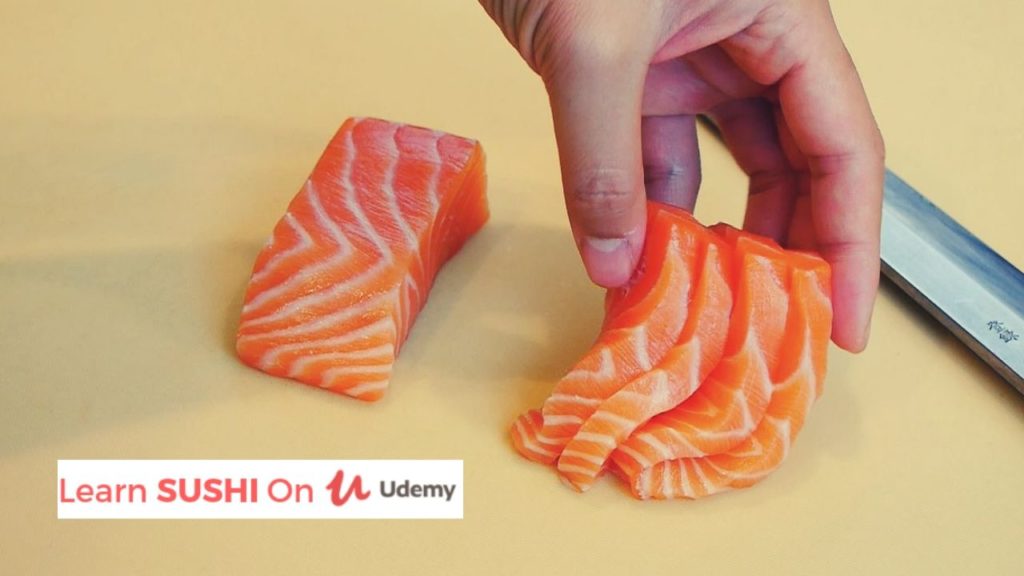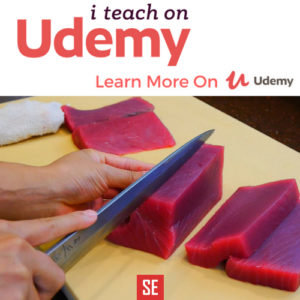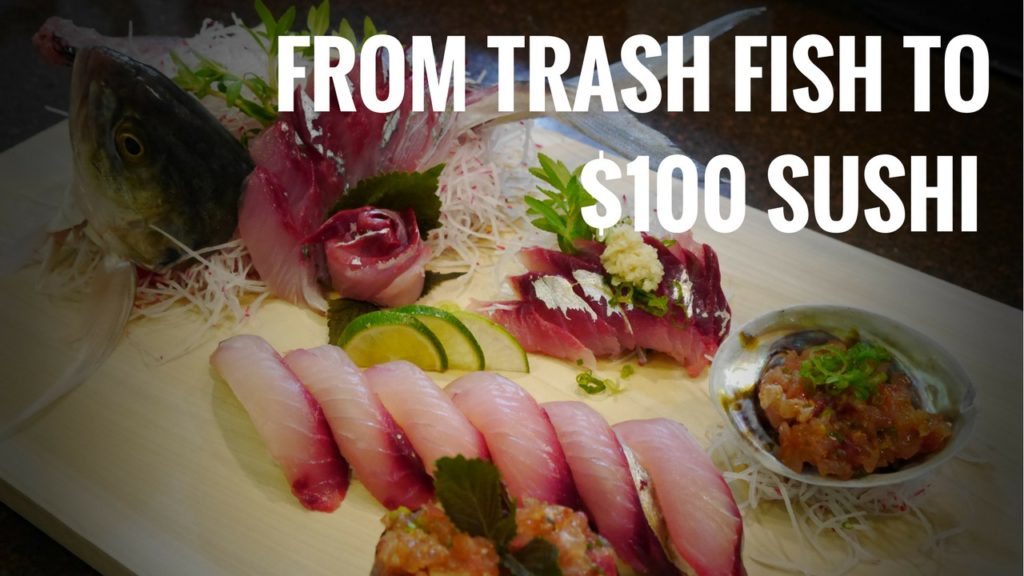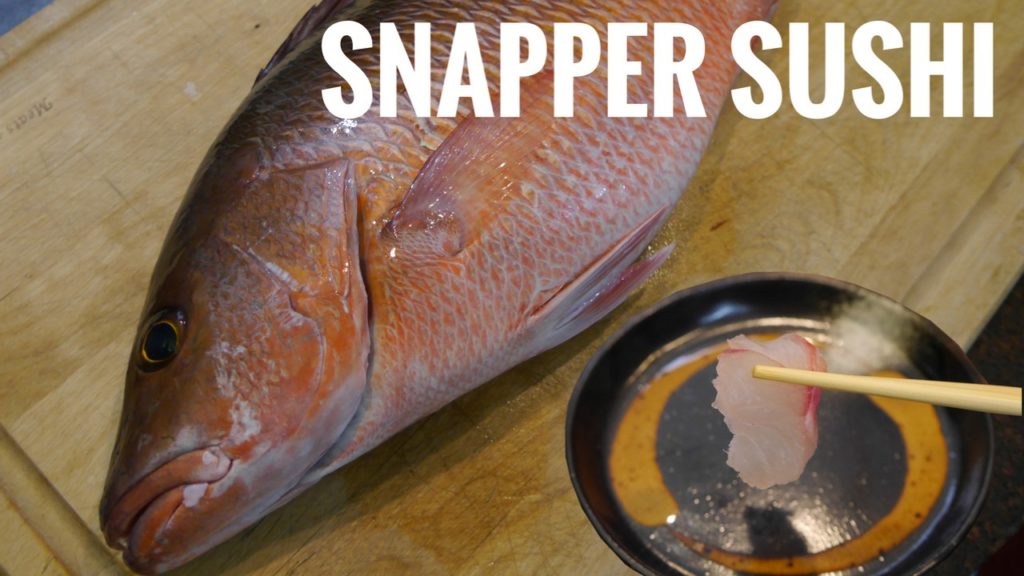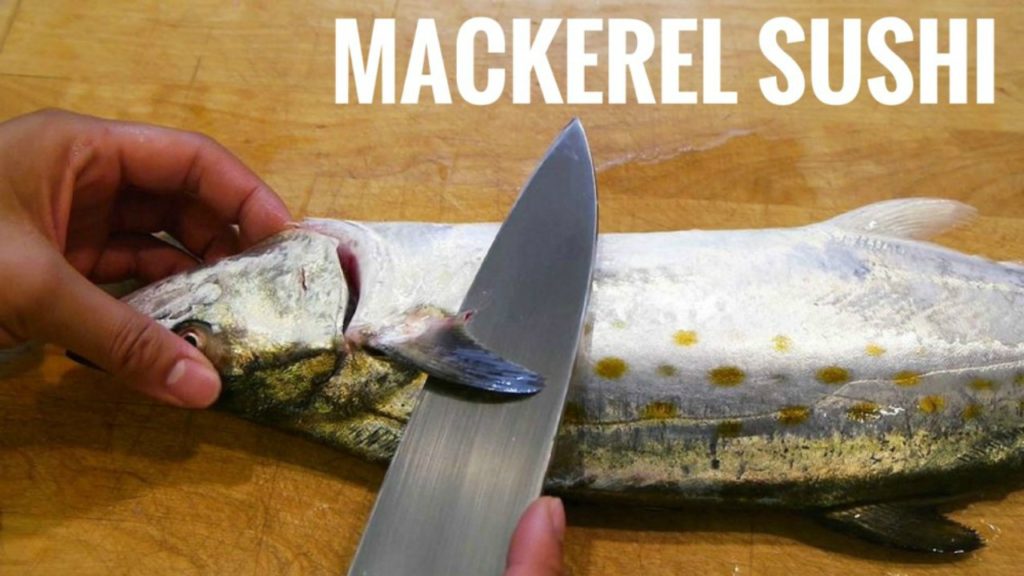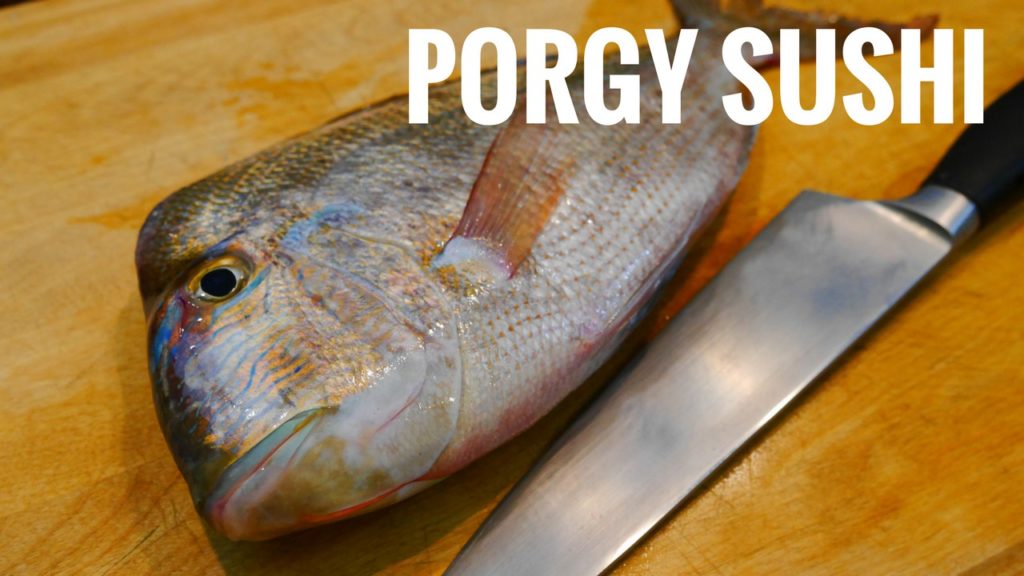Learning how to fillet salmon for sushi is one of the most challenging skills to develop for new sushi chefs. You have to consider what type of knife to use, the proper cutting technique, how to handle the fish without breaking the meat, and how to maximize yield. In this article, I’ll explain what I think is the best knife to use for newcomers.
The method I’ll be talking about breaks the traditional style of what is considered to be the standard Japanese technique. So if you believe the current Japanese method is the best and only way, then stop reading right here.
What is the Best Knife for Filleting Salmon?
This is a loaded question. It depends on who you’re asking and what the end use of the product is for. And the truth is, the best knife to fillet salmon for sushi is whatever is the most EFFICIENT and COMFORTABLE for the chef.
Japanese chefs are known to predominately use Deba or Gyuto. Chinese chefs have no problem cutting fish with a cleaver. However, most Western chefs use a much lighter, flexible, and less cumbersome blade, such as the Dexter Russell, a favorite among processors.
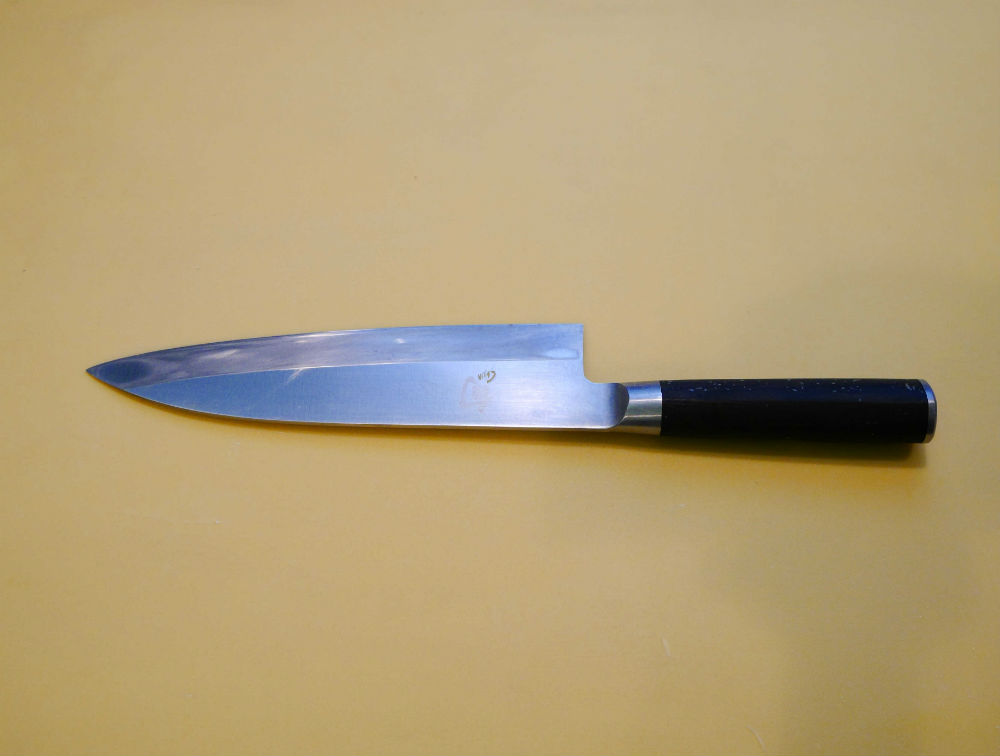
Deba 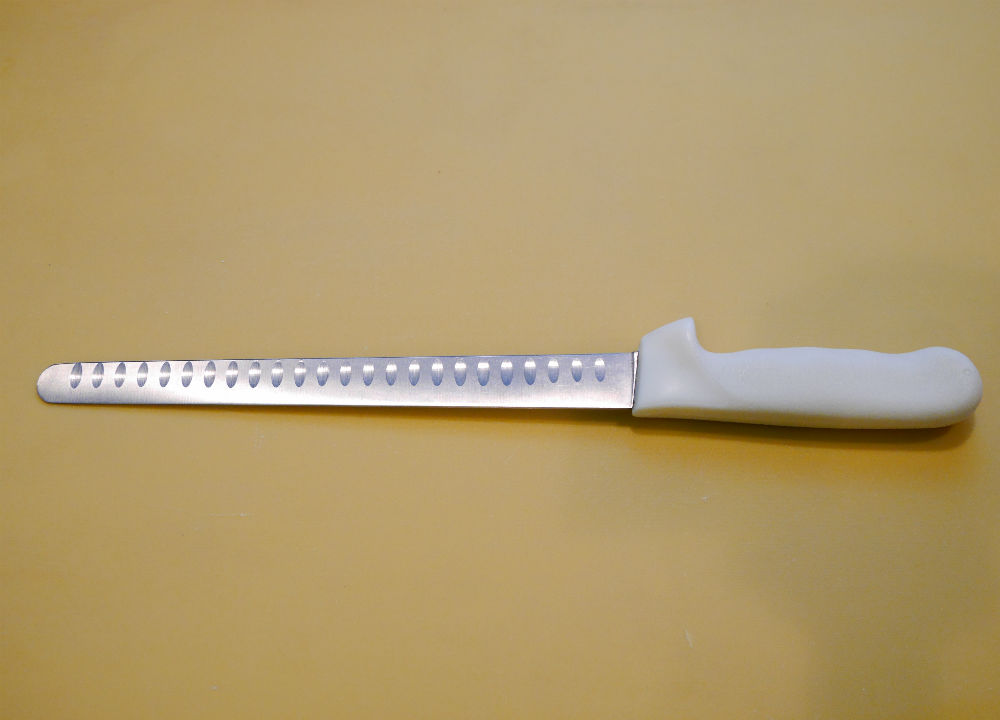
Hollow Ground Slicer 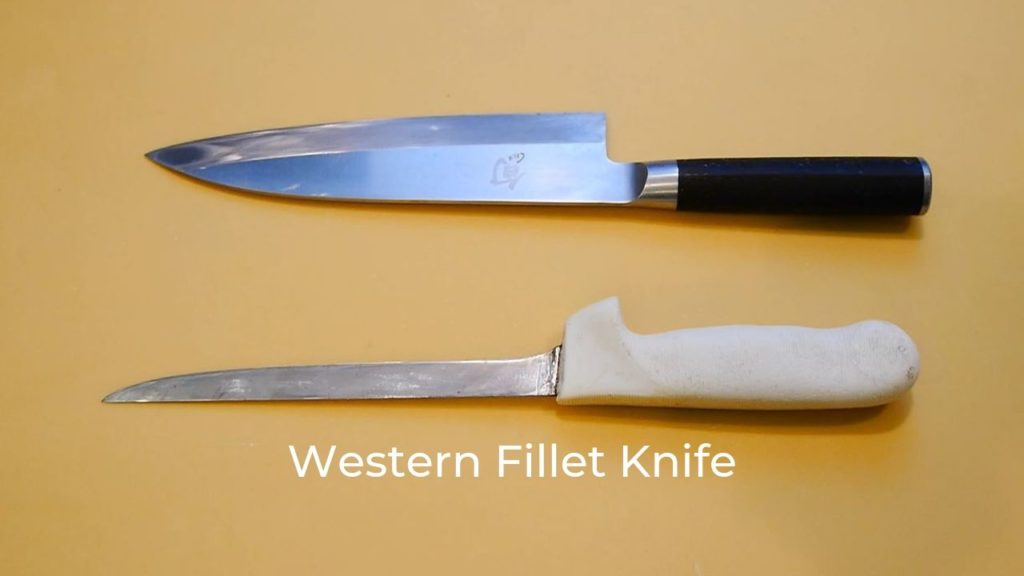
Dexter Russell Fillet Knife
For me, I use a combination of both a Deba and Hollow Ground Slicer, aka a Hollow Edge. It’s a very unorthodox approach, but extremely effective for filleting salmon. Several reasons why I like using the slicer so much. (1) easy to train, (2) minimizes handling of the meat so less chances for gaping, and (3) efficiency. Watch video below.
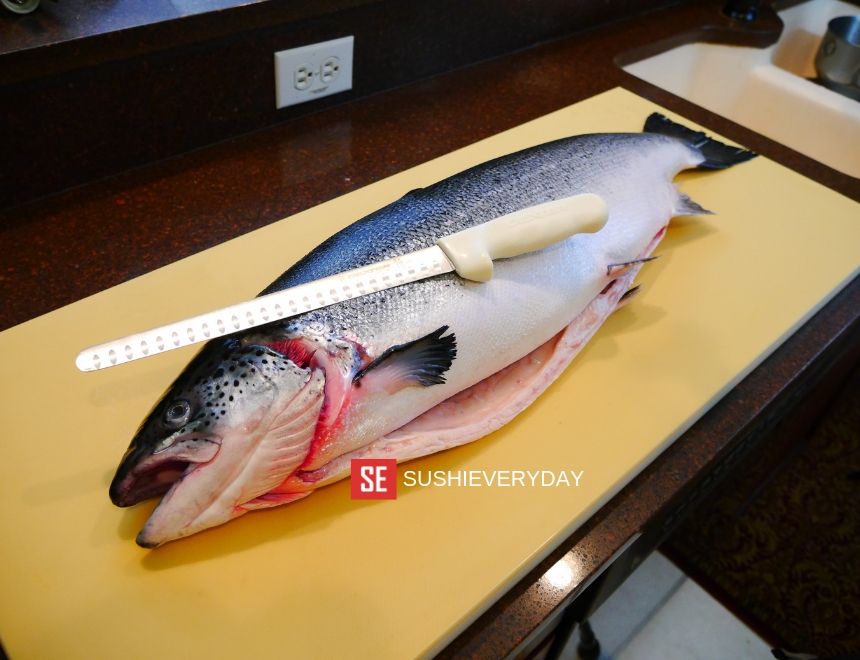
Easier to Train Chefs
In the past, when I had to to try train new chefs on how to fillet salmon for sushi with the traditional deba knife was no easy task. However, with the hollow ground slicer, I can train someone to fillet a salmon in 1 day versus weeks with the deba. That’s because using the slicer requires less steps and easier techniques.
Does this mean that the deba is an inferior knife to the slicer? Absolutely not! The deba is an excellent knife for breaking down other fish like snapper or grouper where cutting the bone is essential. But for filleting application it is not the best tool in my opinion other than to cut off the salmon head.
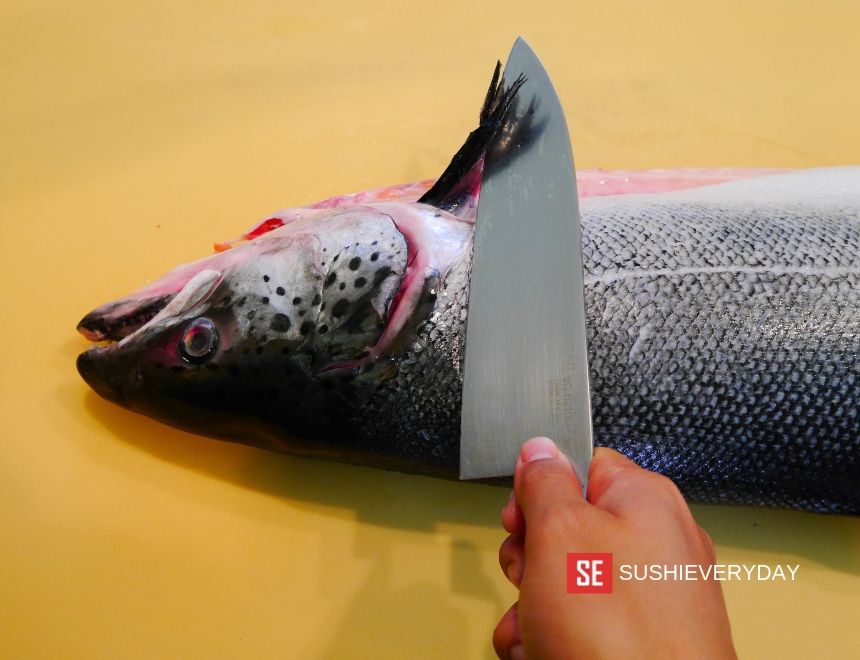
Minimize Handling Reduces Fillet Gaping
The key benefit of the hollow ground slicer is that I never once have to lift up the salmon fillets with my hand to get the proper cutting angle. This is impossible if you use a deba. And any chef that has ever filleted salmon knows that the flesh can be extremely delicate and cracks easily if handled too aggressively. (Gaping can also occur when fish are mishandled or subjected to time & temperature abuse during processing)
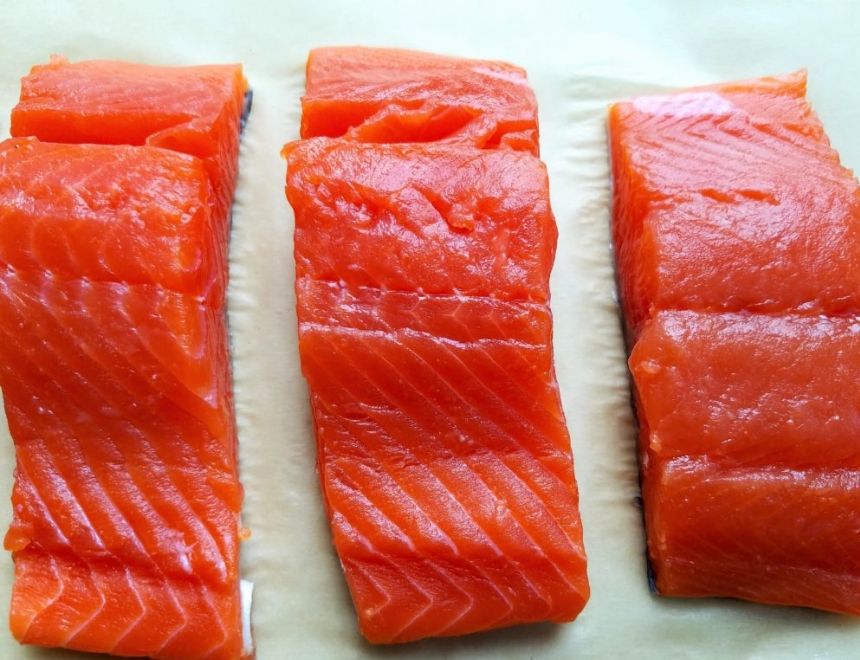
Anyone that has to fillet cases of salmon weekly, will see the benefit of the slicer in the long-term. Tradition does not always equate to superior. Below are some examples of gaping in salmon.
More Efficient Filleting Technique
So what do I mean by more efficient? Let’s define efficiency 1st. For me, its (1) faster, (2) quality is maintained or improved, and (3) the end product is not affected. In my opinion, learning how to fillet salmon for sushi with the hollow ground covers all 3 objective. It simply requires much less steps and maneuvers than using the traditional deba knife. Message me on Facebook.
If you are still doubtful, that’s good, because don’t believe everything you read on the web. Instead, watch the video below and judge for yourself.
Most Comprehensive Sushi Course Online
So now that you learned how to fillet salmon for sushi with a special knife, do you want to learn how to break it down even further for sushi and sashimi applications? Learn more on my Udemy course.
